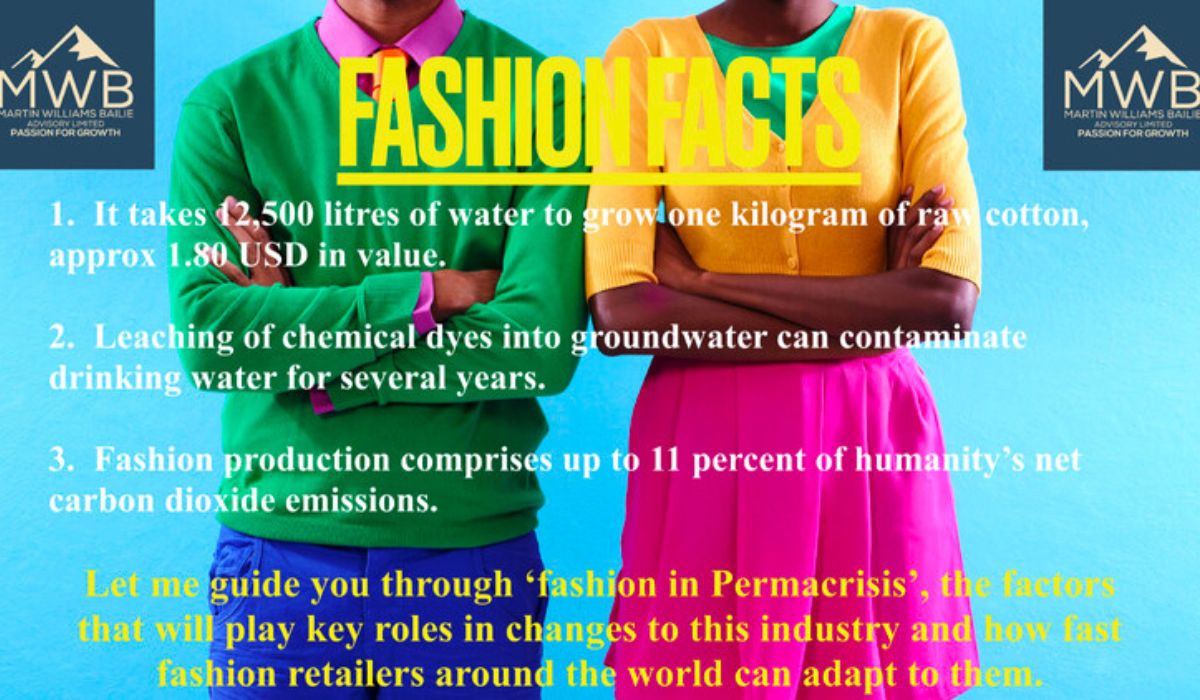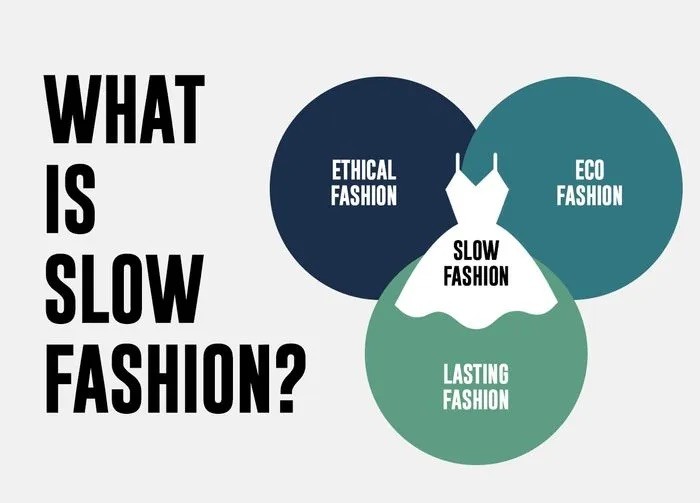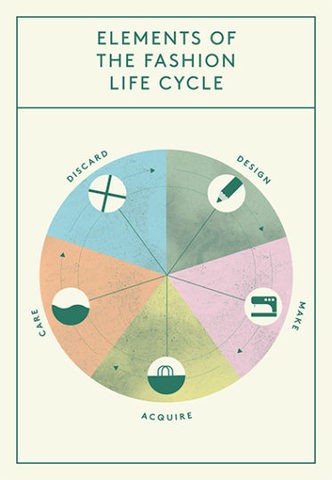
‘Fashion executives are anticipating a tough year ahead as the global economic slowdown threatens to reverse the industry’s rapid post-pandemic recovery. According to McKinsey’s ‘The State of Fashion’ report, 84% of industry leaders expect market conditions to worsen or stay the same in 2023.’
Between rising inflation, geo-political instability, continuing de-globalisation and the forced introduction of new fluid business models, change is the only universal factor that the fashion industry will witness in 2023 & beyond.
If the changes that the world has faced in the last several years have taught us anything, it’s that everything is connected. This planet is a closed system, and what one company does can easily have a lasting impact halfway across the globe. However, it is critical for players in the fashion industry to understand each of these factors that are changing the value chain.

Let me guide you through ‘fashion in permacrsis’, the factors that will play key roles in changes to this industry and how fast fashion retailers around the world can adapt to them.

If the changes that the world has faced in the last several years have taught us anything, it’s that everything is connected. This planet is a closed system, and what one company does can easily have a lasting impact halfway across the globe. However, it is critical for players in the fashion industry to understand each of these factors that are changing the value chain.
Today’s global fashion retailers face a number of challenges, including:
- Changing consumer preferences: Consumers are becoming more conscious about the social and environmental impact of fashion and are demanding more sustainable and ethical products.
- Fast fashion: The fast fashion business model has been associated with environmental and social problems and is coming under increasing scrutiny from consumers and regulators.
- E-commerce: The growth of e-commerce has disrupted traditional retail models and created new challenges for brick-and-mortar stores.
- Supply chain disruptions: The COVID-19 pandemic has exposed the vulnerabilities in global supply chains, leading to disruptions in production and distribution.
Despite these challenges, there are also growth opportunities for fashion retailers, including:
- Sustainability: Fashion retailers that can offer sustainable and ethical products are well-positioned to attract consumers who are looking for more environmentally and socially responsible fashion. Can fashion achieve value & sustainability?
- E-commerce: E-commerce is expected to continue to grow and is a significant opportunity for fashion retailers to expand their reach and customer base. Omnipresent retailing core to this customer-offering.
- Personalisation: Retailers that can offer personalised products and experiences to consumers are likely to see growth as consumers seek more unique and customised fashion. Customers Emotional Insights will be heavily invested in by global retailers and DEEP AI analytics will mean you will understand your future customer even at an emotional level. The NEW loyalty battleground.
- Innovation: Retailers that can innovate and adapt to changing market conditions are likely to see growth opportunities, such as developing new materials, production methods, or business models. SMART retail, SMART supply chain, AI, VR, AR and immersive retailing experiences are key investment blocks to future proof fashion retailing-tomorrow.
- Emerging markets: Emerging markets, such as South America, China and India, represent significant growth opportunities for fashion retailers as they continue to experience economic growth and rising consumer spending.
Overall, fashion retailers that can balance the challenges with growth opportunities and adapt to changing market conditions are likely to see the most success in the industry.

However in order to thrive and dominate in the global fashion markets, fashion CEOs should consider the following strategies:
- Embrace sustainability: Fashion consumers are increasingly concerned about the social and environmental impact of their purchases, so CEOs should focus on implementing sustainable practices throughout the supply chain, from sourcing materials to manufacturing and shipping.
- Invest in technology: The fashion industry is rapidly evolving, and CEOs need to stay ahead of the curve by investing in new technologies such as artificial intelligence, 3D printing, and virtual and augmented reality.
- Focus on the customer: Fashion CEOs must prioritise the customer experience, by personalising offerings, creating unique experiences, and engaging with customers on social media.
- Be innovative: Fashion CEOs could look for new ways to stand out in a crowded market, such as developing new materials or production methods, experimenting with new business models, or partnering with innovative start-ups such as Presize, Vividye, Outfittery, Intelistyle and Project Cece to name a few.
- Expand globally: Global expansion is an important growth strategy for fashion companies, but CEOs must also be mindful of local cultural differences and adapt their strategies accordingly.
- Collaborate and partner with others: CEOs should consider partnerships and collaborations with other fashion brands, retailers, or tech companies, to expand their reach and bring new ideas and innovation into the business. Holition, Pertitly, Excess-Materials-Exchange, Trendalytics for example.
Overall, fashion CEOs should be flexible, adaptable, and innovative, while also focusing on sustainability, customer experience, and global expansion, to stay ahead of the competition and succeed in the global fashion market.

Fashion businesses MUST improve their ESG (environmental, social, and governance) credentials by taking a number of actions, including:
- Sustainable sourcing: Using eco-friendly materials, such as organic cotton or recycled fabrics, can reduce the environmental impact of fashion products.
- Energy-efficient production: Implementing energy-efficient practices and using renewable energy sources, such as solar or wind, can reduce carbon emissions.
- Waste reduction: Reducing waste in the production process and increasing the use of recycling and upcycling techniques can help to reduce the environmental impact of fashion.
- Ethical labour practices: Ensuring fair labour practices and safe working conditions for workers throughout the supply chain can improve the social impact of fashion products.
- Transparent reporting: Providing transparent reporting on ESG performance and initiatives can improve the governance of fashion businesses.

A greener fashion industry can have a significant positive impact on the world by reducing carbon emissions, waste, pollution, and promoting sustainable and ethical practices throughout the supply chain. It can also promote biodiversity, support communities, drive innovation and new business models that can contribute to a more sustainable future. By promoting a greener fashion industry, businesses can attract consumers who are increasingly interested in sustainability and social responsibility, and can also help to drive regulatory and industry-wide changes to address environmental and social challenges.
FAST fashion can become even more sustainable, but it will require significant changes in the way it operates. Fast fashion retailers can take a number of steps to become more sustainable:
- Sustainable sourcing: Fast fashion retailers can use sustainable materials, such as organic cotton, recycled fabrics, and low-impact dyes. They can also consider alternative materials, such as plant-based or biodegradable fibers.
- Circular economy: Fast fashion retailers can move towards a circular economy model, where materials are kept in use for as long as possible through practices such as recycling, upcycling, and repairing.
- Ethical labour practices: Ensuring fair labour practices and safe working conditions for workers throughout the supply chain can improve the social impact of fast fashion products.
- Responsible production: Implementing energy-efficient practices and using renewable energy sources, such as solar or wind, can reduce carbon emissions. Reducing waste in the production process and increasing the use of recycling and upcycling techniques can help to reduce the environmental impact of fast fashion.
- Sustainable logistics: Fast fashion retailers can consider more sustainable logistics options, such as optimising transportation routes and using alternative fuels for delivery vehicles. SMART supply chain I will cover next.
- Transparency and reporting: Providing transparent reporting on sustainability initiatives and performance can improve the governance of fast fashion businesses and help to build trust with customers.
Overall, fast fashion retailers like Inditex, H&M, Primark can become more sustainable by adopting a more responsible approach to sourcing, production, and logistics, and by moving towards a circular economy model. This will require significant investment and innovation, as well as collaboration with industry partners, governments, and other stakeholders.
‘There are huge opportunities ahead in Fashion. The BIG bets are non-negotiable. It’s the commitments and capabilities that will determine the speed of execution required to stay ahead of the consumer and competition!’

